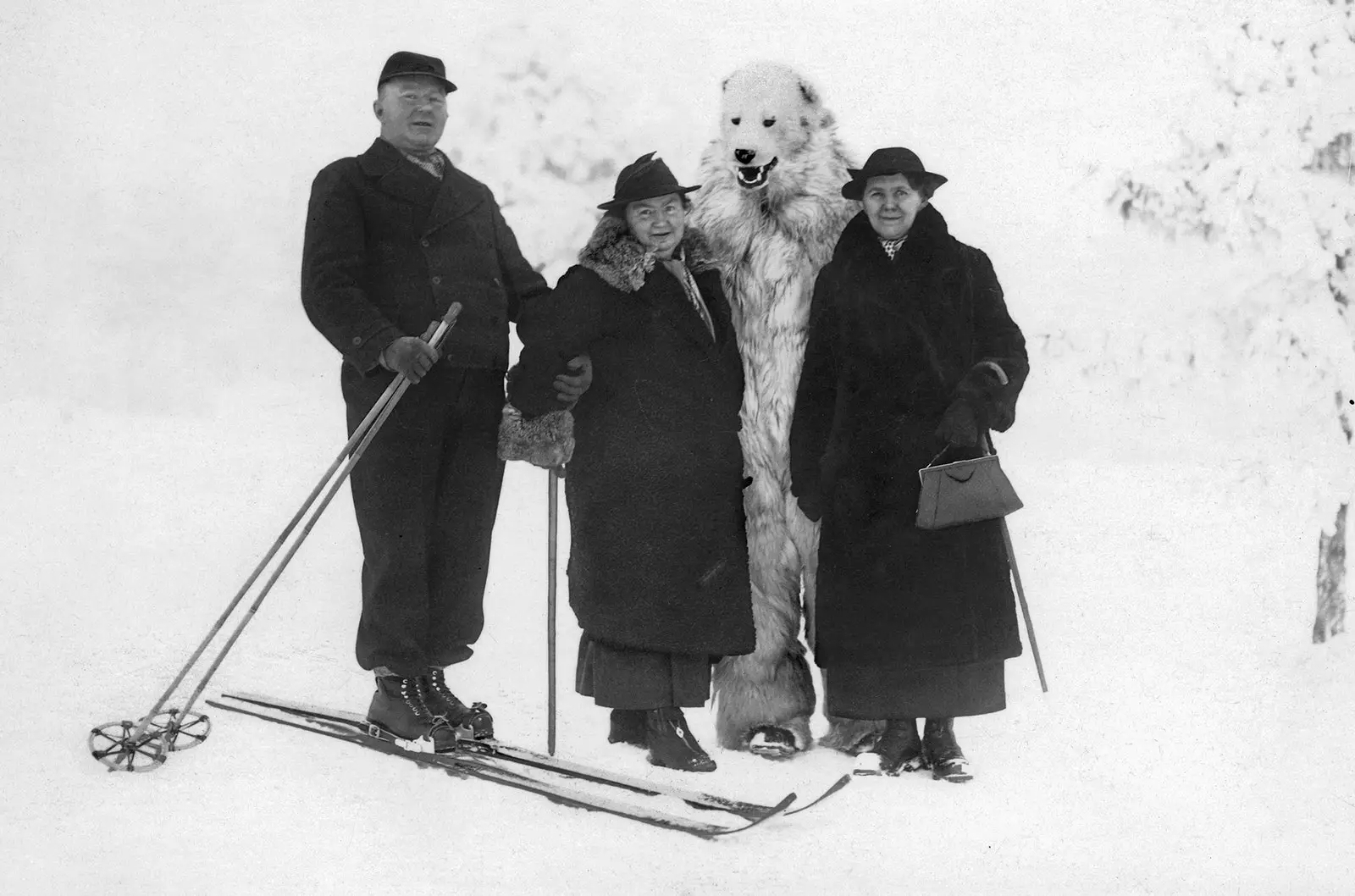
Travelers in the Third Reich: a 'lovely' vacation through Nazi Germany
In the small Berlin square of bebelplatz , calm and pleasant today, it happened, the May 10, 1933 , an atrocious and sad event that still resonates in the memory of many. There, arms raised and at the orders of Goebbels , the Hitler Youth and members of the Brownshirts burned multitude of books that they considered dangerous for the government of Hitler.
Thousands of copies were labeled "anti-German" ”. works by authors such as Sigmund Freud, Karl Marx or Ernest Hemingway they served to feed the fire; the fiery speech of Minister of Propaganda he did the same with hatred, because as they were thrown into the fire, their authors were mentioned and what their fault was.
In memory of that tremendous massacre, today, in the center of this square, a glass slab covers a monument in memory of the burning of books on that May 10 : some white and empty shelves that show what is missing there: the books burned on that tragic night.
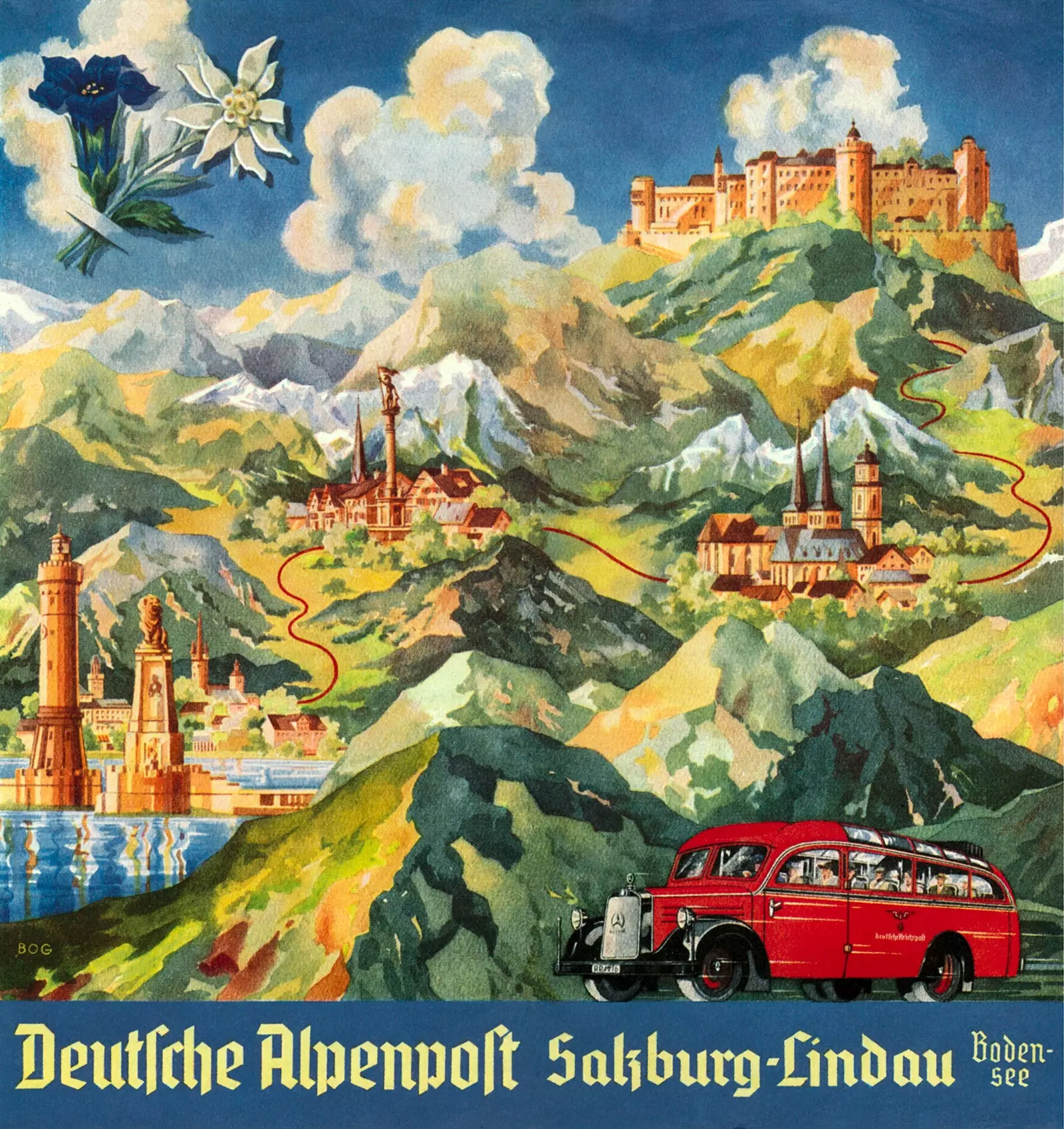
Poster about the benefits of Germany in the year 1939
In front of her, a plaque recalls the phrase that the poet Heinrich Hein -of Jewish origin, and one of the many authors that the Nazis wanted to make disappear from libraries-, he wrote in 1817, more than a hundred years before this happened: "That was only a prelude, where books are burned, people end up being burned as well."
The poet's phrase turned out to be a sad prophecy, despite the fact that, curious as it may seem today, in those years, not everyone saw nazism coming even though he had it right in front of his eyes.
In fact, Germany in the 1920s and 30s managed to fall in love with all kinds of tourists and travelers. Although today it seems incredible to us, it was not a risk tourism, but they were relaxing vacation , becoming a highly sought after destination for honeymooners until the Second World War began.
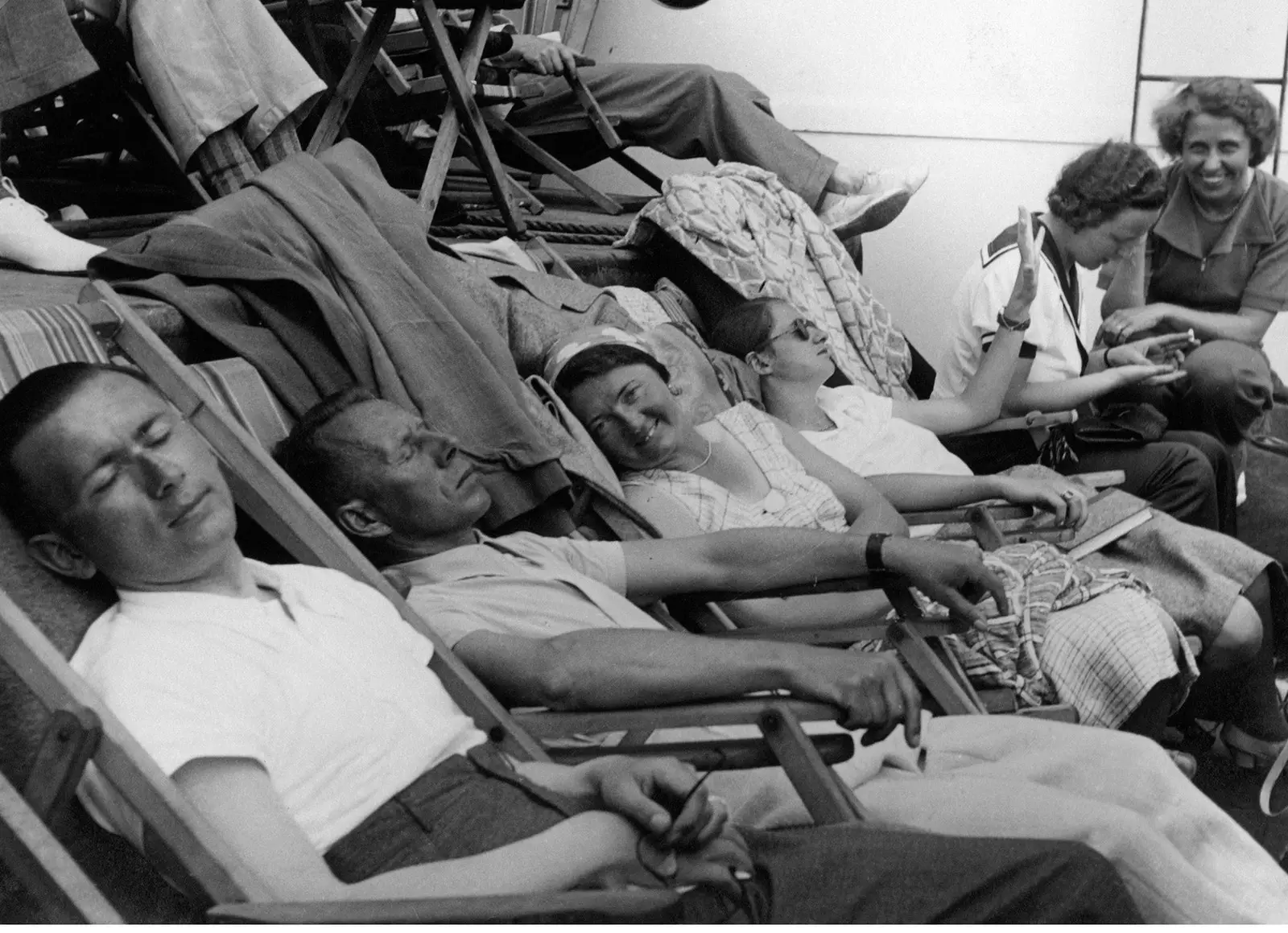
Passengers of the German cruiser 'Monte Rosa' in 1937
under the weight of Treaty of Versailles, berlin It was a city in full boil and its inhabitants showed a serene tolerance towards their conquerors who walked calmly. During the years of Weimar Republic, the country's political-economic situation was complicated and discontent was widespread.
It was thanks to abolition of censorship that Berlin's stage boxes and night shows were a hotbed of innovation dealing with political and sexual issues, turning the German capital into the unquestionable symbol of European cabarets . It was an exciting and prodigious period in the theatrical, sexual and artistic, a tourist destination of liberation. However, and although anti-Semitism and communism were already evident, Who could, in a partial visit of this caliber, as it is a trip, predict the evil that was being cultivated in the Germanic country?
With the rise of Hitler to power, tourism became a priority , which is why, in 1933, the Reich Tourism Committee , because it was a excellent propaganda tool that helped counteract the negative image they projected abroad. If the tourists returned satisfied to their countries of origin, having lived unforgettable experiences, would praise the regime quite spontaneously on his return.
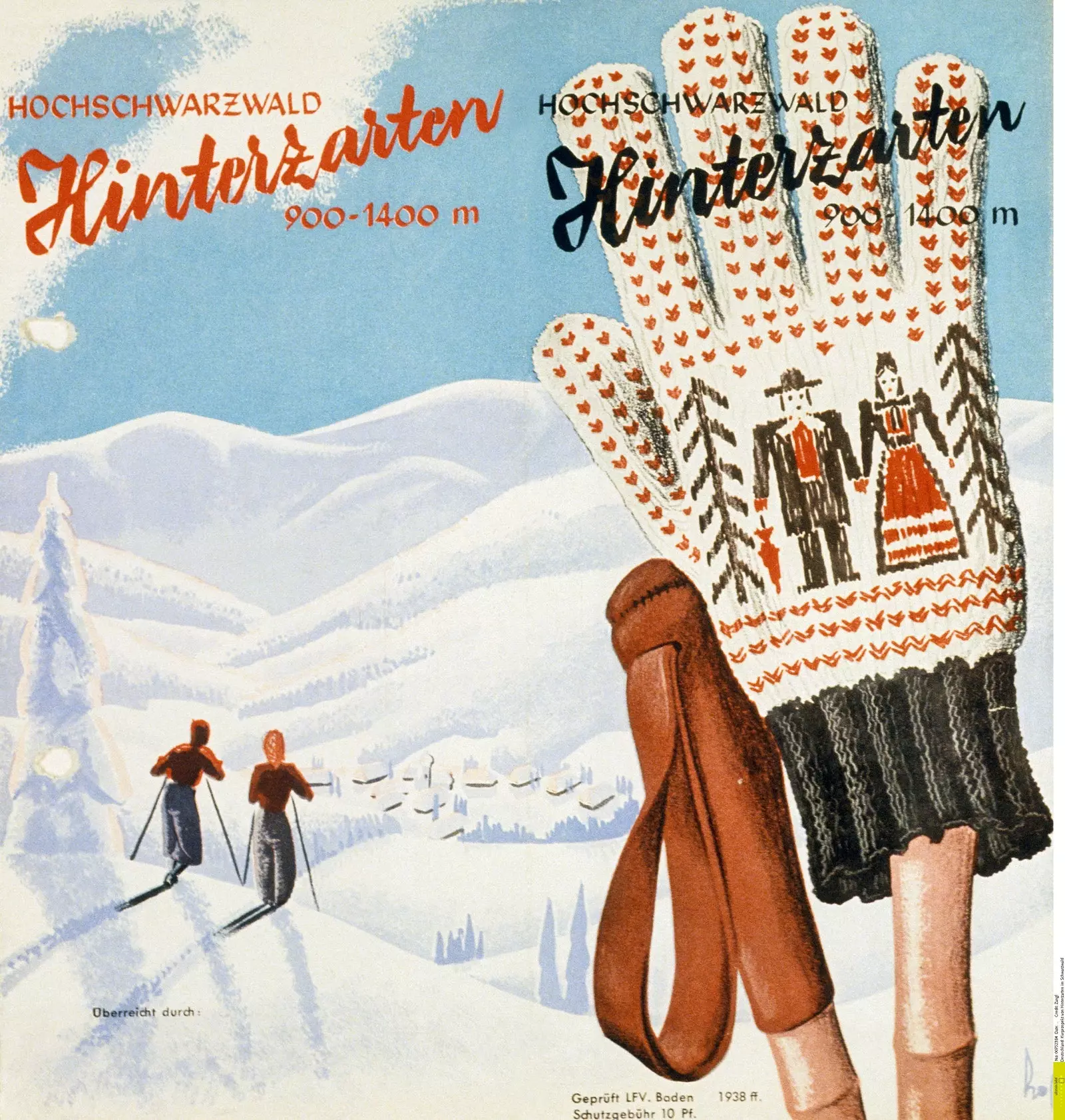
Advertisement for the spa town of Hinterzarten in the Upper Black Forest
One of the most important tasks for Der Fuehrer was to convince world public opinion of his pacifist zeal and that Germany was a stopper that guaranteed the brake on Bolshevik expansion, while he conquered power in the entire country.
"Travel brochures featured quaint little towns, colorful dresses and friendly policemen, and thousands of copies were sent abroad, devoid of any anti-Semitic violence, now reserved only for the domestic market. "Come check it out," read one of the brochures. - Germany is in the lead”, narrates the British writer Julia Boyd in her book Travelers in the Third Reich: the rise of fascism told by travelers who toured Nazi Germany ( Book Attic ), an essay in which delves into the perception that some visitors had of said territory during the interwar decades.
In its pages, the author has resorted to various newspapers, letters, brochures and press articles written by diplomats, politicians, students and even authors like Virginia Woolf or Francis Bacon , but also collects anonymous testimonies from some people who visited the nation between 1919 and 1945.
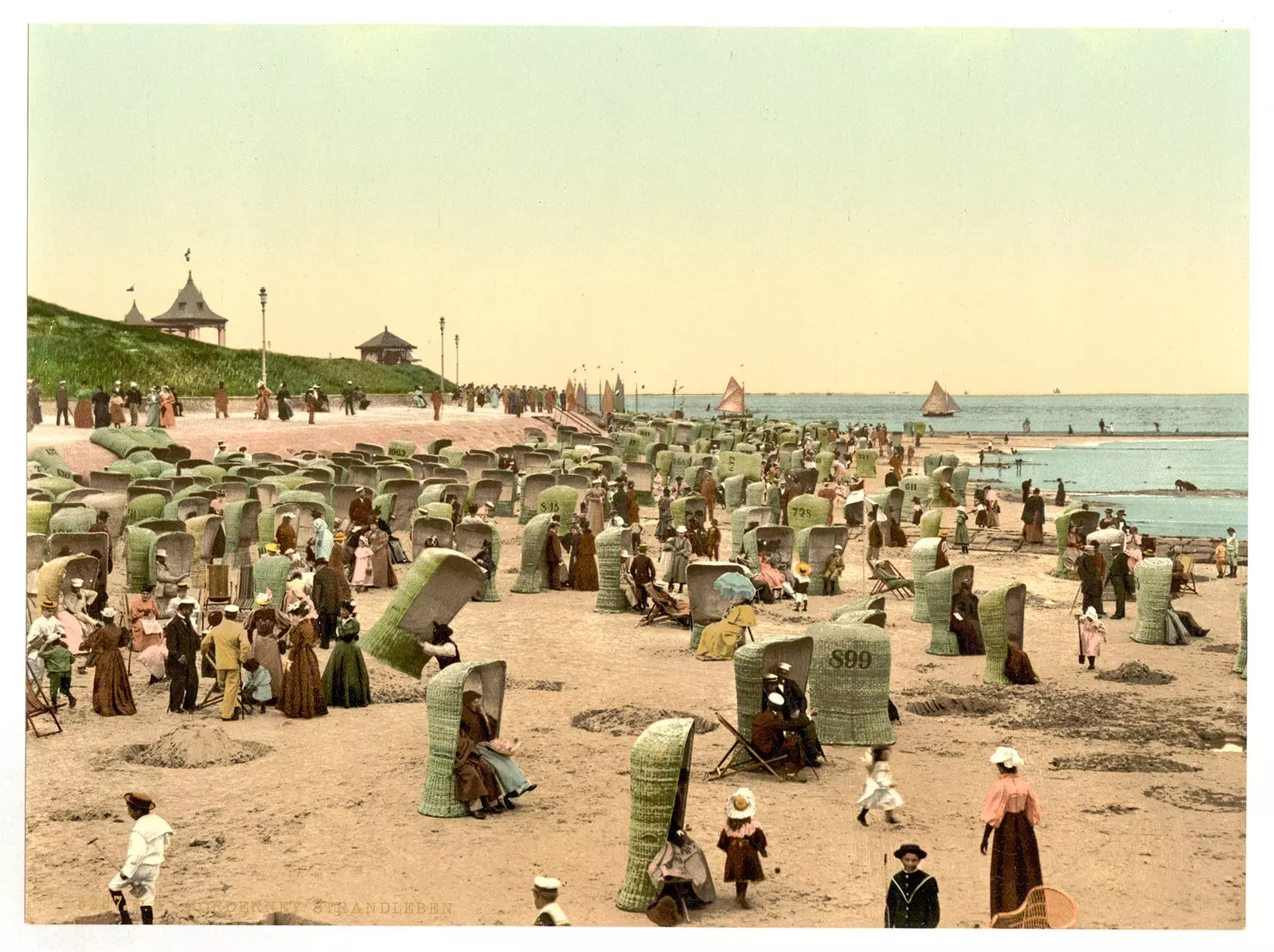
Tourists on the beach at Norderney, in the Frisian Islands, in 1937
The national socialist propaganda it was so effective that it managed to cover with a patina of normality all the repression and violence that it displayed in the streets. Although, in some English newspapers They compared the Nazis to the Ku Klux Klan. , tourists continued to arrive in the country with the intention to enjoy its gastronomy and landscapes.
Some of these travelers thought that the press exaggerated because it did not correspond to what they saw. Even if what they saw was dotted with anti-Semitic posters . It is the case of Evelyn Wrench , President of The Spectator , who traveled to Hitler's nation with the intention of "understanding the other's point of view" and who, although she had witnessed how some young people in Berlin shouted Juden verrecke! "Death to the Jews!" She returned to her native England stating that "the best we can do for German Jewry is to try to maintain a impartial attitude towards Germany and show that we really want to understand the aspirations of this country.
Many Britons belonging to the aristocracy or the higher classes, could not help but surrender to the Hitler's Word Charm , Due to the constant threat what communism meant for their lifestyles. On the other hand, in the case of some Americans, they turned a blind eye to what was called "the Jewish question" , because in the United States, black citizens suffered treatment similar to that experienced by Jews there, with the difference that in Germany was fully legalized and, on US soil, there was no.
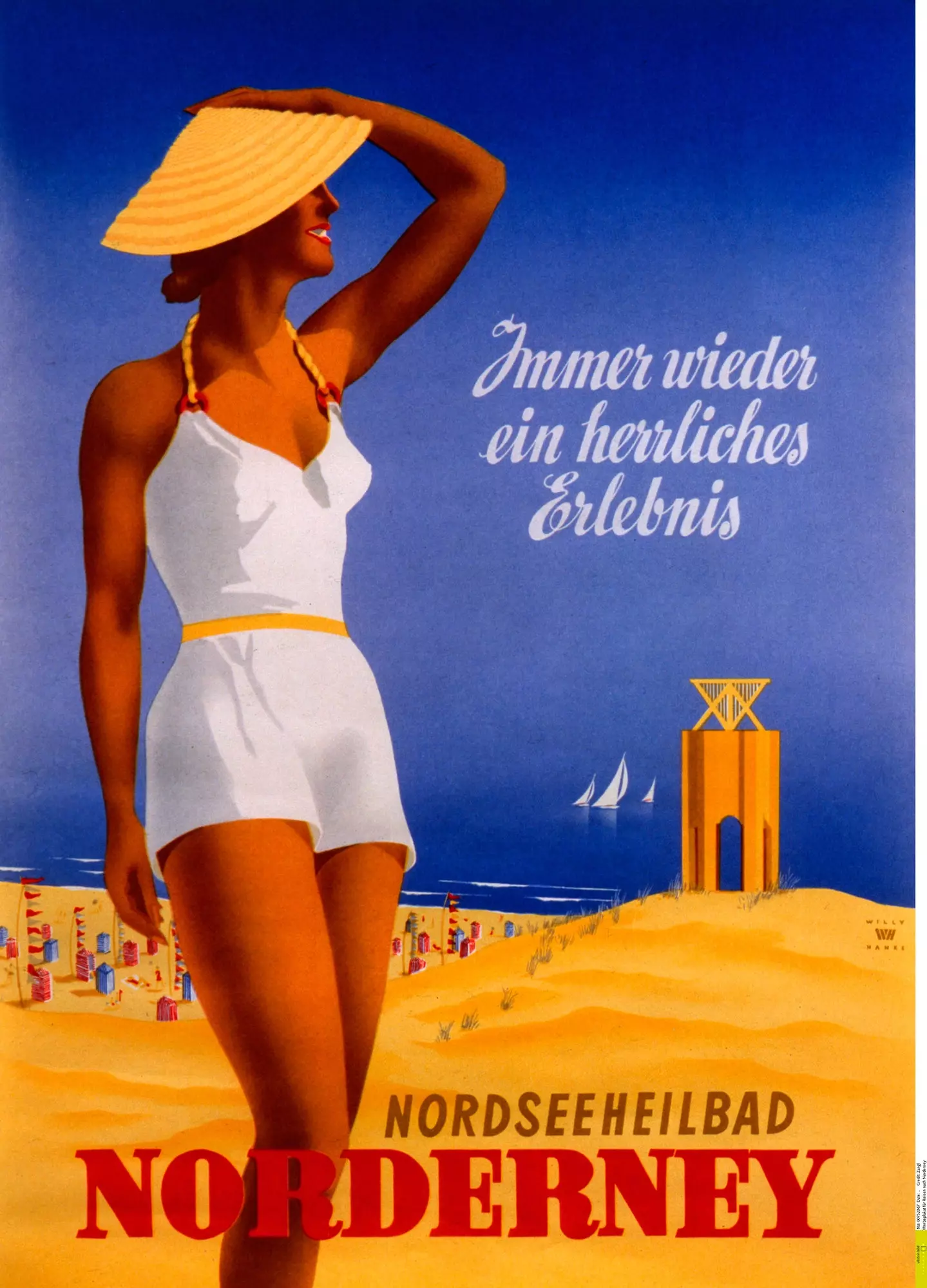
Tourist poster for Norderney, a beach in the Frisian Islands, in 1936
But the hospitality was widespread, the hotels were clean, the windowsills full of potted flowers, the food was excellent Y the beer was served foamy and cheap in this new country resurrected based on swastika, testosterone and elegant uniforms. Many visitors took a enthusiastic and positive impression of this active and optimistic Germany that was reborn from its ashes with modernity, a desire to advance and whose recovery of national pride contrasted with the Great Depression that democracies had experienced during the last ten years. Many others, however, they were scared.
The Nazi utopia hypnotized some and slapped others with its tremendous reality. Constantia Rumbold , daughter of British diplomat Sir Anthony Rumbold, was one of many people who witnessed the torchlight march in Berlin , on January 30, 1933, an event that gave her chills and about which she wrote "No one who had witnessed how the soul of Germany had paraded through the streets that night could harbor the slightest doubt of what was going to happen."
Undoubtedly, one of the most overwhelming and exciting testimonies that Boyd collects in his book takes us to the summer of 1936, in the city of Frankfurt. There she was on her honeymoon a newly married british couple , who were approached by a distraught Jewish-looking woman and she handed over, without warning, the girl she was holding by the hand, begging them to get her out of Germany.
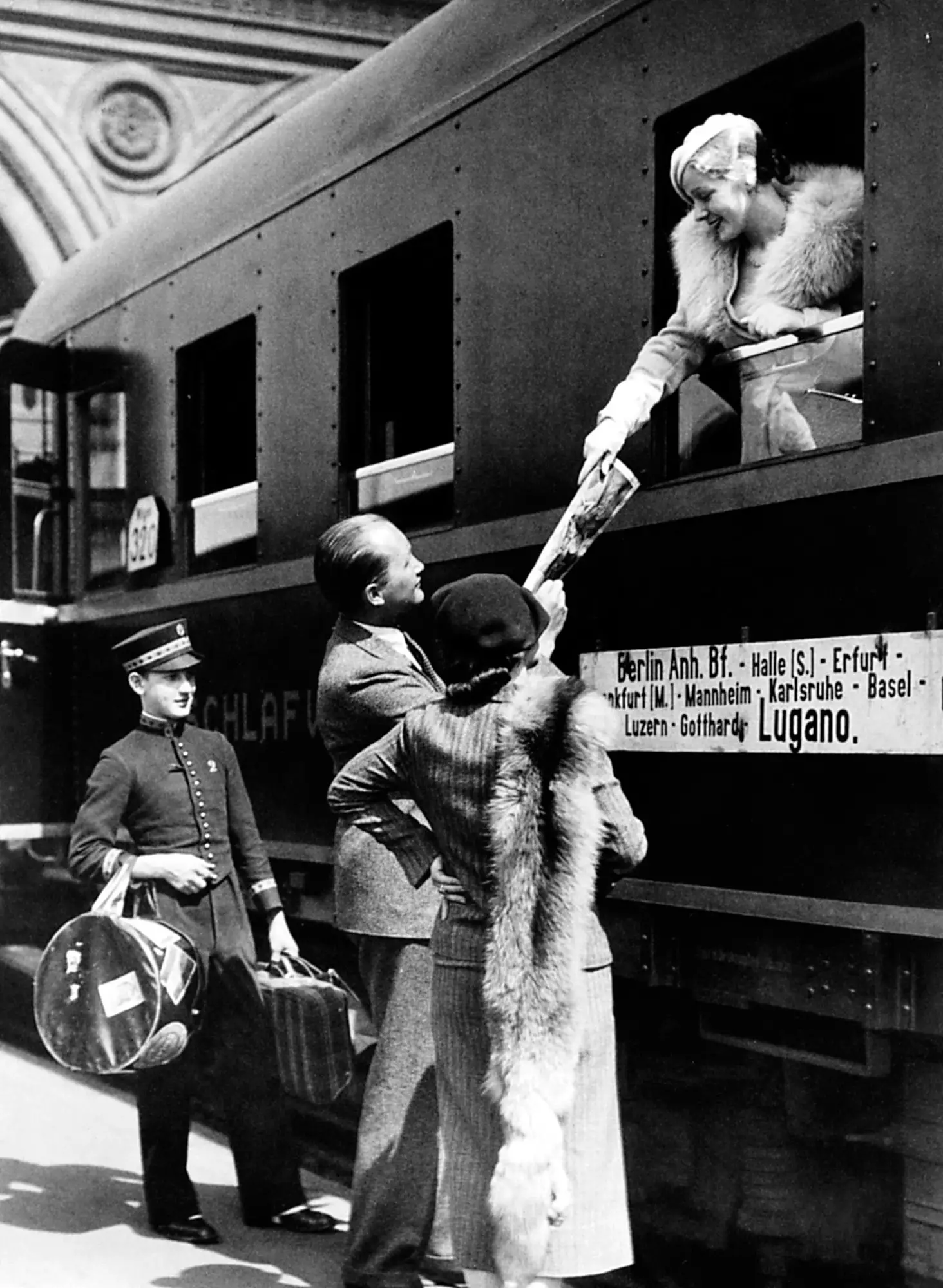
Anhalter Bahnhof, Berlin, in 1939
In the book's introduction, the author directly addresses the reader with this story: "All the disturbing rumors you have heard about the Nazis (the persecution of Jews, euthanasia, torture and imprisonment without trial of dissidents) are concentrated at that moment in the face of that desperate mother ". And she asks, "What would she do? Would she turn her back on the horror she's in and she'd walk away from her? Would you feel sorry for her but say that she can't do anything about it? Or would she take the girl, to save her?"
They did.
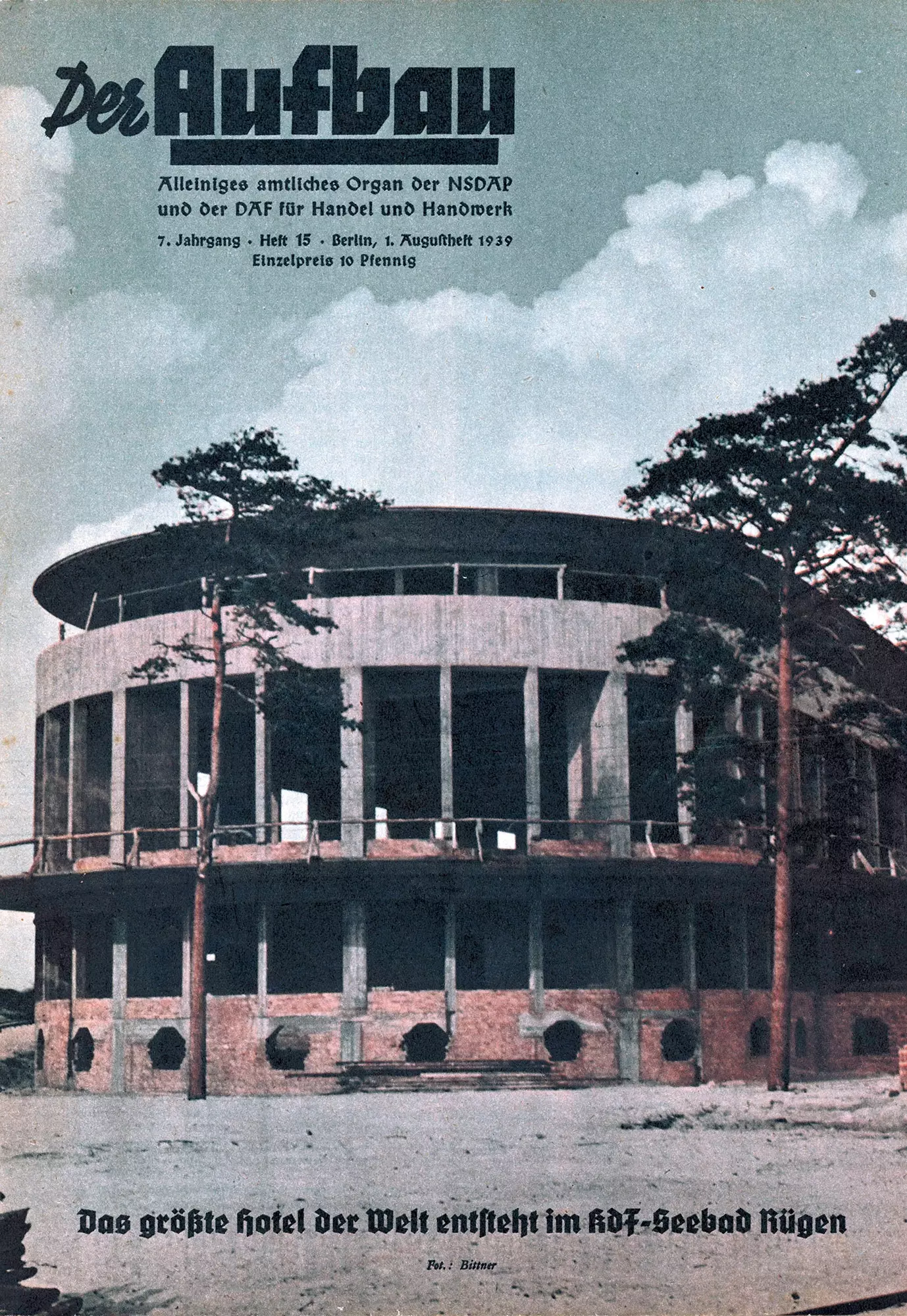
Illustration of the Prora resort on the Baltic Sea built by the Nazis in 1939, although never completed
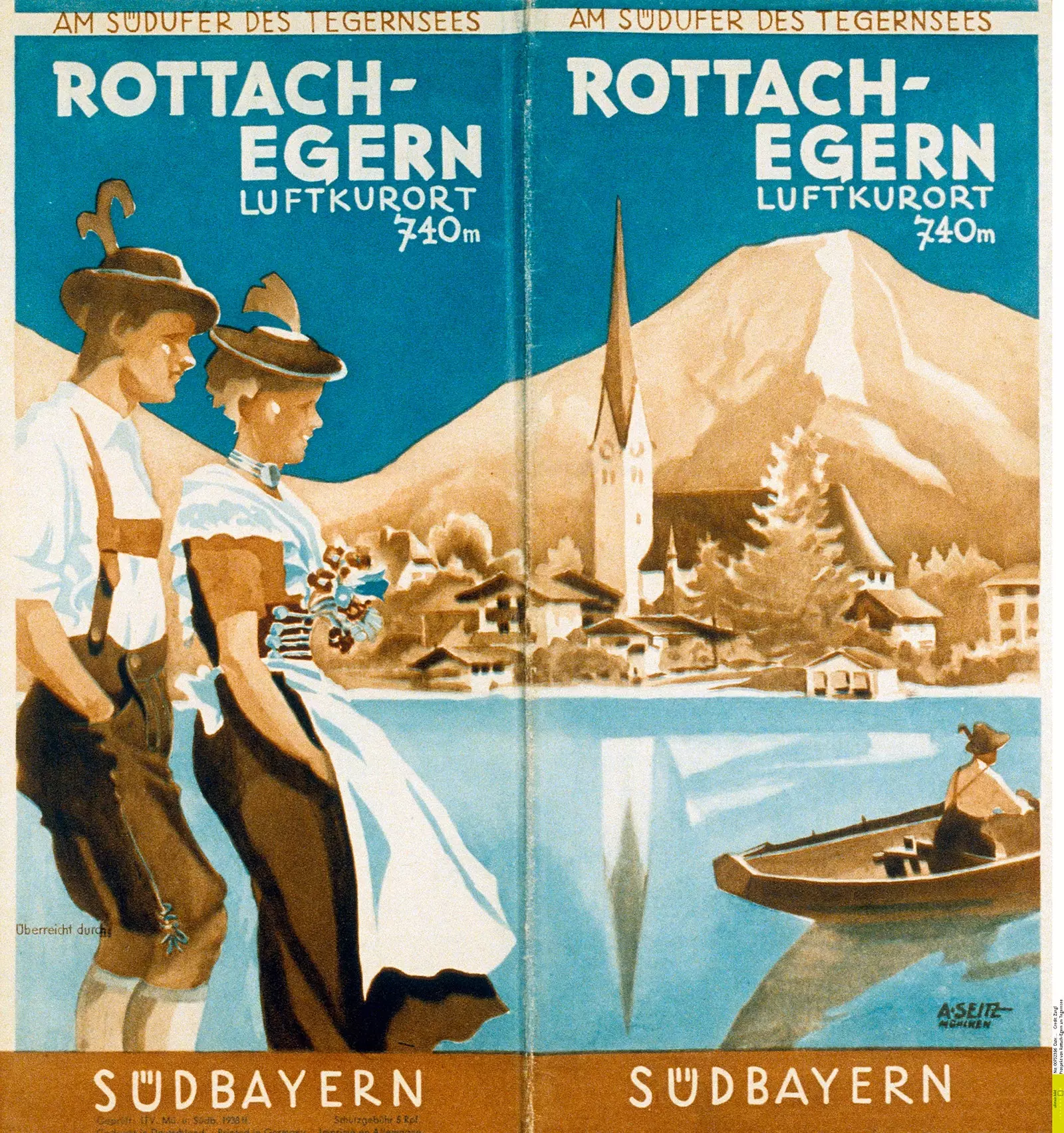
Trade advertisement for Lake Rottach-Egern in Lower Bavaria
